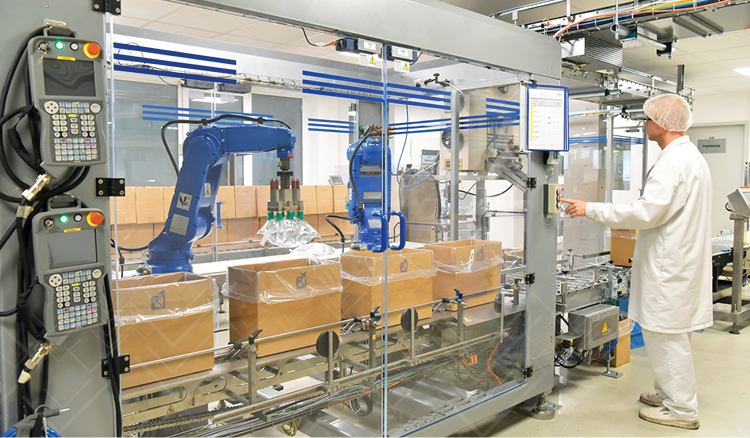How to Build a Labor Pool (Examples and Results)
If you’ve used on-demand labor for a while, you’ve probably heard the concept of a labor pool mentioned at least once. And maybe you’ve decided you want to implement this model at your business, but you’re thinking it can’t just be as simple as “build a labor pool.” What does that even mean?
As you might know, a labor pool is a network of workers who are familiar with your operations who you can call on at any time.
At Veryable, we have helped companies build their own pools of qualified workers using our on-demand labor marketplace. These companies see cost improvements and lead time reduction as they respond to demand faster by bringing in on-demand workers. We know this can make us seem biased, but we want to share a few case studies from our clients in this article as well to show you what has worked for other companies.
By the end of this article, you will know how to build a labor pool. With a labor pool in place, you can trust in your own source of flexible capacity to stay competitive.
How to build a labor pool in five steps
- Start using on-demand labor to solve one problem
- Identify how much flexibility you need
- Grow your labor pool by adding good workers
- Expand your labor pool by posting for different dates and times
- Maintain your labor pool by adding new workers continually
1. Start using on-demand labor to solve one problem
The best way to build your labor pool is to start solving one problem with on-demand labor. When you focus on one area using an on-demand labor platform, you can see where and when it’s best to bring in workers. With a focused approach, it’s easier to see how they are integrating into your workplace because your attention will not be spread across many new workers in many areas at once. Only having workers from the platform in one area will also allow you to focus on identifying good workers who you want to invite again in the future.
2. Identify how much flexibility you need
If the demand for your products is seasonal, you can use past headcounts during busy season as a guide for how big you should build your labor pool. If you hired 15 extra people last year for your busy season, then this year you can assume you’ll pay 15 on-demand workers each day instead. Calculating from this will give you something to aim at when building your labor pool. Likewise, if you want to grow your company and you know how much you want to grow, then you can find a labor pool size to aim for. If you have a measure of output per worker, and you have a goal output, then you can calculate how many on-demand workers you would want to bring in to help you reach that goal. The benefit of growing this way is that if your demand falls off while you’re growing, you can easily scale back down. If demand keeps pacing upward, then you can continue to grow without labor constraints as you build your labor pool to keep up with your business needs. Armed with your expected variable demand and headcount needs, you can plan to add more on-demand workers to reach your target labor pool size so you are prepared for anything.
3. Grow your labor pool by adding good workers
When you identify workers from the on-demand labor platform who work well at your company, you can add them to your favorites list. At Veryable, we call this Your Labor Pool. This shortlist of workers contains the people you want to specifically invite to work at your business when you have new opportunities. Adding workers to your shortlist is a great way to see at a glance how much potential extra capacity you have. These workers can come in and immediately increase your capacity because everyone in your labor pool has been trained and is ready to work.
4. Expand your labor pool by posting for different dates and times
To get a variety of workers into your labor pool, you should post work opportunities for different times of the day and for different days of the week. This will ensure you train people to work for whatever day and time you might need the extra hands.
By having workers trained for each day and time, you will know that your labor pool is full of workers who are truly prepared for whatever is needed.
5. Maintain your labor pool by adding new workers continually
It is often tempting to stop inviting new workers and be content with just enough people in your labor pool. This is not the best way to proceed.
To be able to depend on your labor pool, you will need to build your labor pool bigger than you might initially think. As a rule of thumb, we encourage businesses to build their labor pool to be three times the size of your potential greatest variable need.
For example, if at your busiest time you need an extra 10 workers, build a labor pool of 30 workers to ensure you have the necessary coverage to manage those swings in demand. A labor pool consisting of three times the amount needed avoids reliance on any one worker for one spot. Instead, it creates the opportunity for three workers to bid on the one spot to account for workers being unavailable. This creates a cushion for your business and gives you more options for which workers you want to select.
Examples of successful labor pools
Below is a rough timeline of a successful labor pool development. The chart combines a few of the steps above for simplicity. Adding workers to your labor pool, diversifying their work times and areas, and continually inviting new workers all typically happen at the same time. You will see that the process of building a labor pool typically takes between 7 and 14 weeks before you will notice its full effects.

To give you some real world examples, we have gathered a few case studies from Veryable customers below that show what successfully deploying a labor pool looks like.
Example one: a logistics company prepares for holiday season
One logistics company built a labor pool over an eight-week period in preparation for the 2020 holiday season. They consistently invited new workers through our on-demand labor marketplace during the months of September and October. When November came and their busy season came with it, they were ready to ramp up their operations with workers they trusted from their labor pool.

This company reported a significantly reduced overtime cost for their full-time employees and eliminated their risk of failure to deliver due to labor shortages. They’ve been able to control labor costs during periods of high demand and can continue to maintain standard on-time delivery targets.
With the flexibility provided by its labor pool, this logistics company has the ability to better manage the periods of high volume and is fully prepared to handle a busy holiday season.
Example two: an e-commerce fulfillment company scales up and down quickly
One e-commerce company achieved a 67% labor cost reduction compared to the previous year using an on-demand labor pool. The company did this by steadily inviting workers from its labor pool to work across different work areas. Then when demand rose, the company ramped up the number of workers it called in.

This e-commerce fulfillment company was able to ramp up instantly to complete its big project, then return to a normal headcount as the work was finished. By building a labor pool it could depend on, the company maintained control of its labor costs when demand changed and it reduced its reliance on overtime.
Why you should build a labor pool now
When on-demand labor is deployed with the end goal of building a labor pool in mind, there are often huge benefits like the lead time reduction and the flexibility shown in the case studies above. Because building a labor pool takes at least a few weeks to achieve, the best time to start is now. You can start slow as we mention in step one, and build your way up from there. Just choose your on-demand labor source and take the first step.
At Veryable, we have helped thousands of companies use on-demand labor to improve their operations, and we want to help you too. Start building your labor pool today by creating a business portal for free.
To see the results manufacturers and distributors are achieving by taking this approach, visit our case studies homepage.
Previous Posts
Takt Time: What It Is and Why It Matters for Production Planning
The Future of Manufacturing and Logistics
Create a free business profile today to explore our platform.






